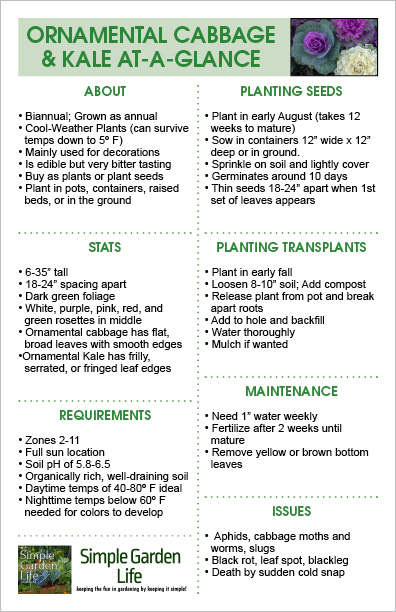Planting and growing ornamental cabbage and kale in your landscape is a great way to add beautiful colors during the fall months. While most plants are grown for beautiful flowers, the foliage is what really stands out for these two plants.
Both feature multiple variants of green foliage with beautiful rosettes in the center. They are a great way to brighten up your summer flower beds and containers that have started to fade due to the colder weather.
Grown as an annual, ornamental cabbage is actually part of the kale family. Neither variety is particularly edible, however. They are mainly grown for looks as opposed to eating since they are quite bitter.
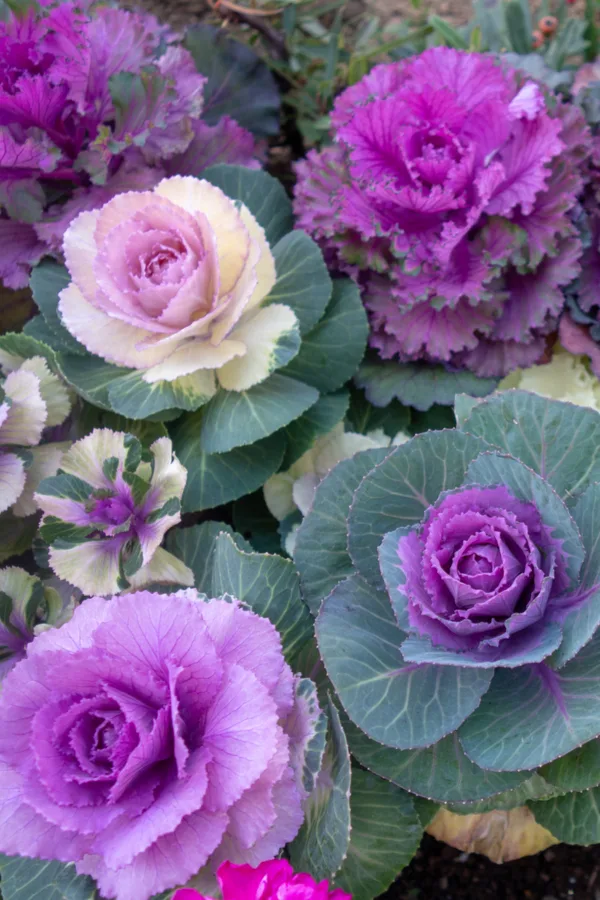
Whether you are growing them in raised beds, in pots and containers, or in the ground, ornamental cabbage & Kale are great additions to any property for beautiful fall displays when you follow these easy “how-to” tips.
Cool Weather Needed For Growing Ornamental Cabbage & Kale
Ornamental Cabbage and Kale are grown in zones 2-11, but they really thrive in cooler weather. (Find your own Growing Zone Here.)
In fact, they need nighttime temperatures of below 60º Fahrenheit (15º Celcius) in order for their colors to really develop. The cooler weather helps to stifle the production of chlorophyll and helps to intensify the colors of the center rosettes.
Both ornamental cabbage and kale grow the best when daytime temperatures are between 40-80º Fahrenheit (4-26º Celsius), but they can survive temperatures down to almost 5º Fahrenheit (-15º Celcius).
Ornamental Cabbage VS Ornamental Kale
While both ornamental cabbage and kale are similar to plant and grow, there is a slight difference between the two in the horticultural world.
Ornamental cabbage features flat, broad leaves that have smooth edges. Ornamental kale, on the other hand, has frilly, serrated, or fringed leaf edges. Both grow similarly and pair well together.
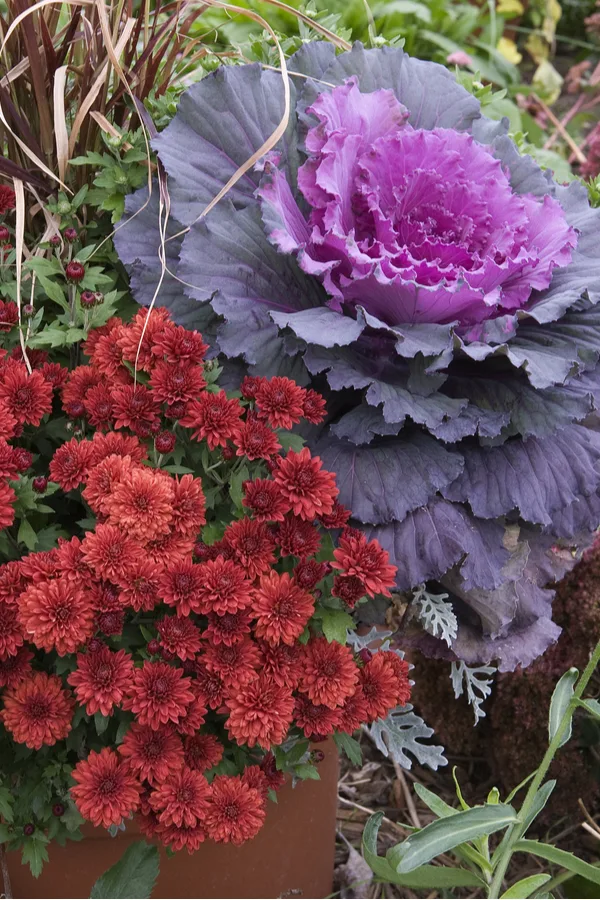
They both range in size from 6 inches all the way up to 35 inches. Ornamental cabbage and kale feature multiple layers of a variety of green foliage with centers of purple, white, red, green, and/or pink.
They work great when planted in containers or nearby other fall plants and flowers such as mums, ornamental peppers, and asters. (Check out this Fall Flower & Plant Guide Cheat Sheet to find some of the best fall plants and flowers to grow together.)
Planting, Growing, And Maintaining Ornamental Cabbage & Kale
Soil Requirements
Ornamental Cabbage and kale prefer soil that is well-draining and organically rich. They also prefer a slightly acidic soil pH of around 5.8 to 6.5.
Planting Ornamental Cabbage & Kale
Local nurseries and greenhouses often carry plants during the early fall, but you can also grow them from seed as well.
If growing from transplants, choose a plant that is already rather large since they are slow to grow. Do not choose one that is leggy, however. Also, make sure to pick one that has bright, vibrant foliage. The centers will brighten up and turn more colorful as the weather cools down.
Ornamental Cabbage and Kale need to be grown in a location that receives full sun. When transplanting them after purchase, loosen the ground soil 8 to 10 inches deep and a few inches wider than their container. You may need to amend the soil by adding compost.
Release the plant from the container and loosen the roots slightly. Discard any brown or yellow leaves on the bottom of the plant. Add the cabbage or kale to the hole and backfill with soil. Make sure to keep 18 to 24 inches between each plant for the best airflow.
Water thoroughly and press the soil down around each plant. You may choose to add mulch around each plant to help them retain moisture.
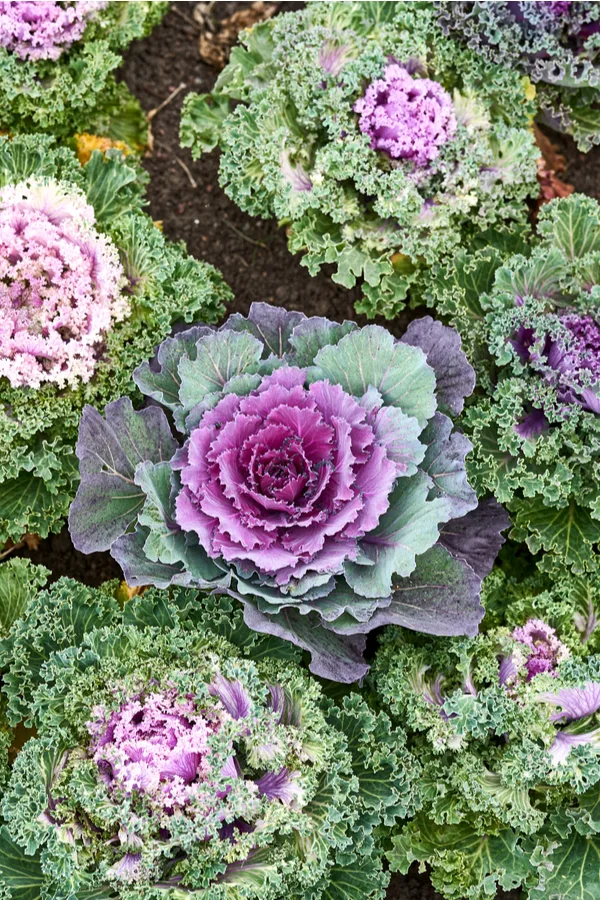
Growing From Seeds
You may also choose to start ornamental cabbage or kale by planting seeds outdoors in containers or in the ground. Not only is this an economical way of growing ornamental cabbage and kale, but it is also very easy to do.
The plants need around 12 weeks to mature to full color, so sow seeds outdoors around mid-August (this timeframe may vary depending on your location and climate). When using a container, choose one that is at least 12 inches wide by 12 inches deep for best results.
Simply sprinkle seeds in an organic-rich, well-draining soil no more than ¼ inch deep. You may choose to add compost if needed to amend the soil slightly prior to planting. Cover seeds very lightly since they need light to germinate. Water and keep moist until germination.
Long-Term Care – Growing and Maintaining Ornamental Cabbage & Kale
Germination should take around 10 days. Once each plant has around one set of leaves, thin down to 18 to 24 inches apart. Some smaller varieties can be planted closer together, so check your seed packet for instructions.
Watering
Ornamental cabbage and kale need around 1 inch of rainwater or hand watering each week. Wait until the top of the soil is dry to touch before watering. Plants in containers and pots will likely need watering more often than those planted in the ground.
Fertilizing
Plants can benefit from a light dose of fertilizer every few weeks after plants have reached the ages of 4 to 6 weeks. Once they reach full maturity, no additional fertilizer is needed.
Pruning
While there are no flowers to prune, you should remove any brown or yellowing leaves at the bottom of the plant. You will often need to do this after periods of excess rain or after hard frosts.
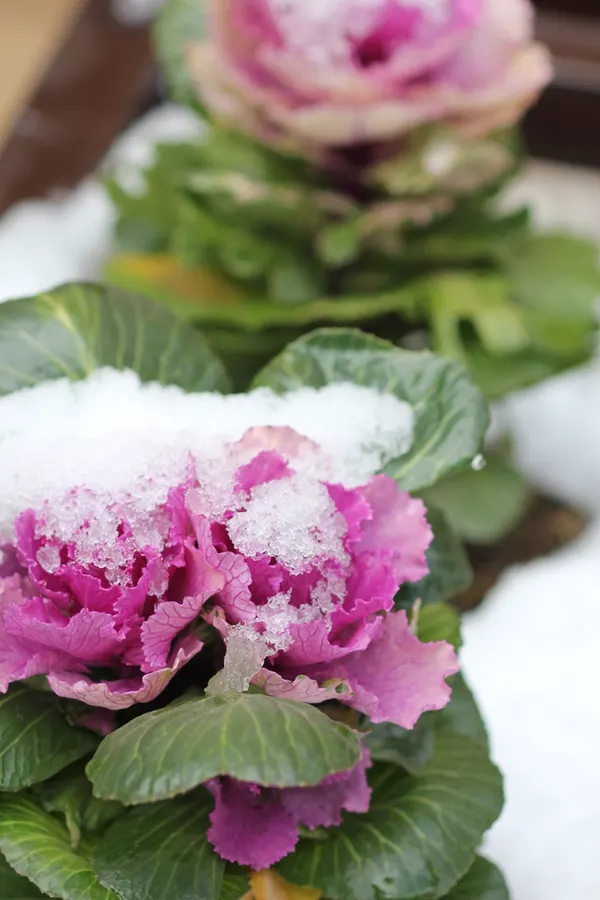
Pests & Issues
Typical pests that plague ornamental cabbage and kale are similar to those that bother traditional edible cabbage plants. Aphids, cabbage moths and worms, and slugs can all be an issue.
In addition, they may have problems with black rot, leaf spot, and blackleg. Keeping plants spaced apart with good airflow and removing any wilted leaves will help with these issues.
While ornamental cabbage and kale can withstand below-freezing temperatures, a sudden cold snap may end up killing some plants. If your plants start to have an offensive odor or begin to look wilted and soggy after thawing out, remove those plants and add them to your compost pile.
To Conclude…
Ornamental cabbage and kale are both a great addition to any landscape when you want to add bright, unique colors, and textures during the fall. And since they are cold-weather tolerant, you will be able to enjoy them long into the cooler weather months.
Feel free to download, print out, or save our Ornamental Cabbage and Kale At-A-Glance sheet. It is sized for half letter printing but can be scaled if needed.
